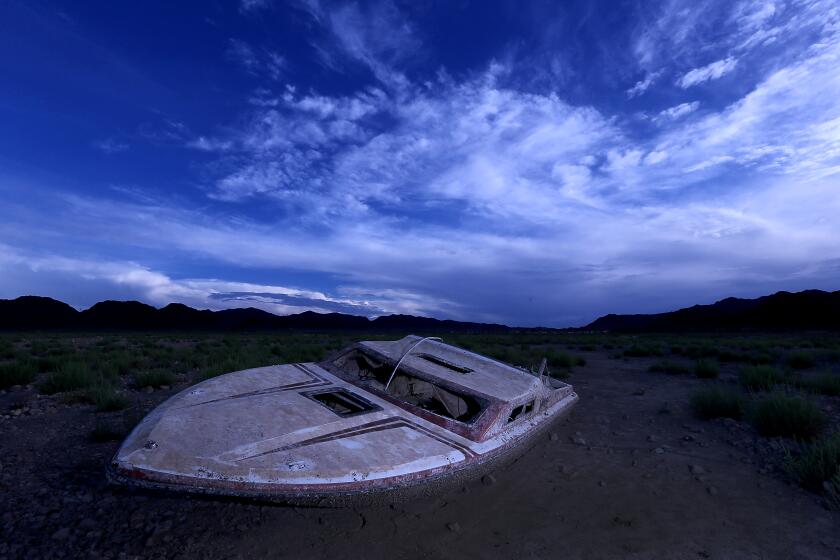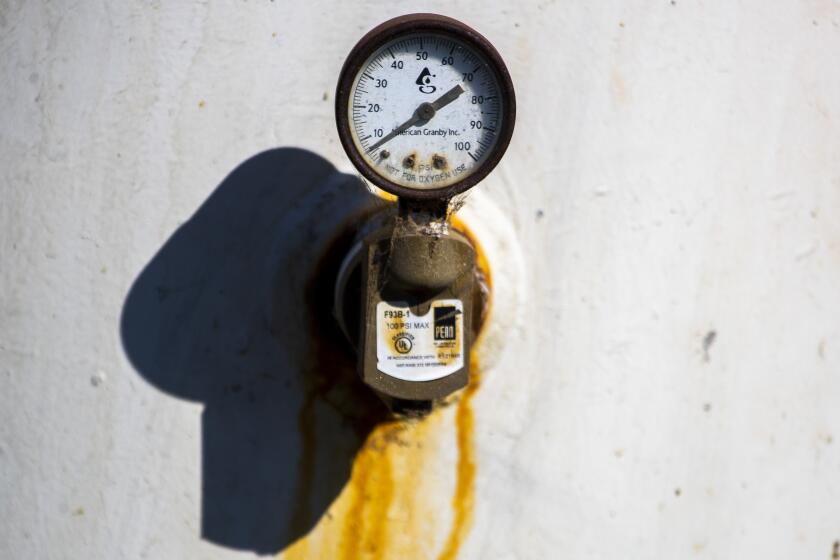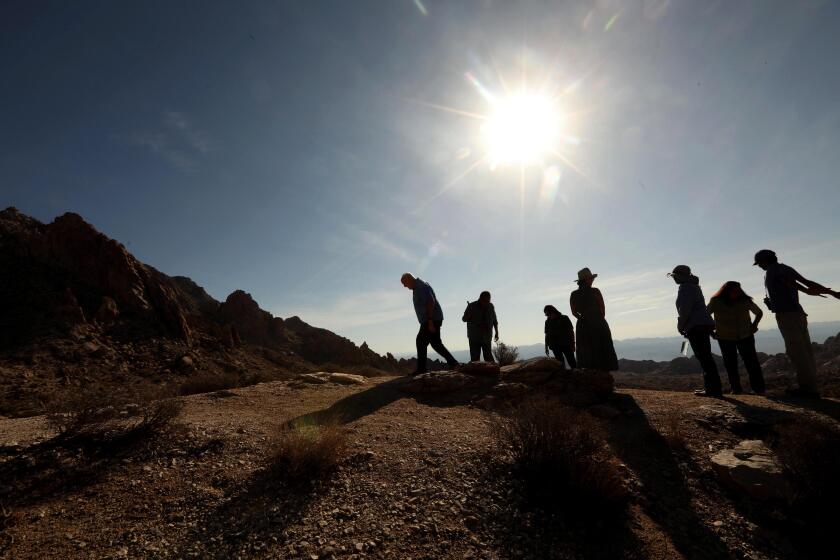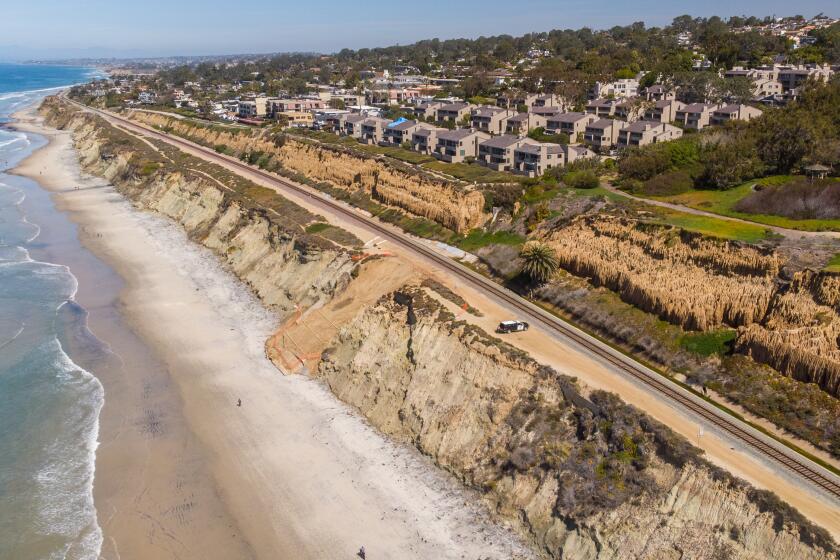Tidal marsh or ‘fake habitat’? California environmental project draws criticism
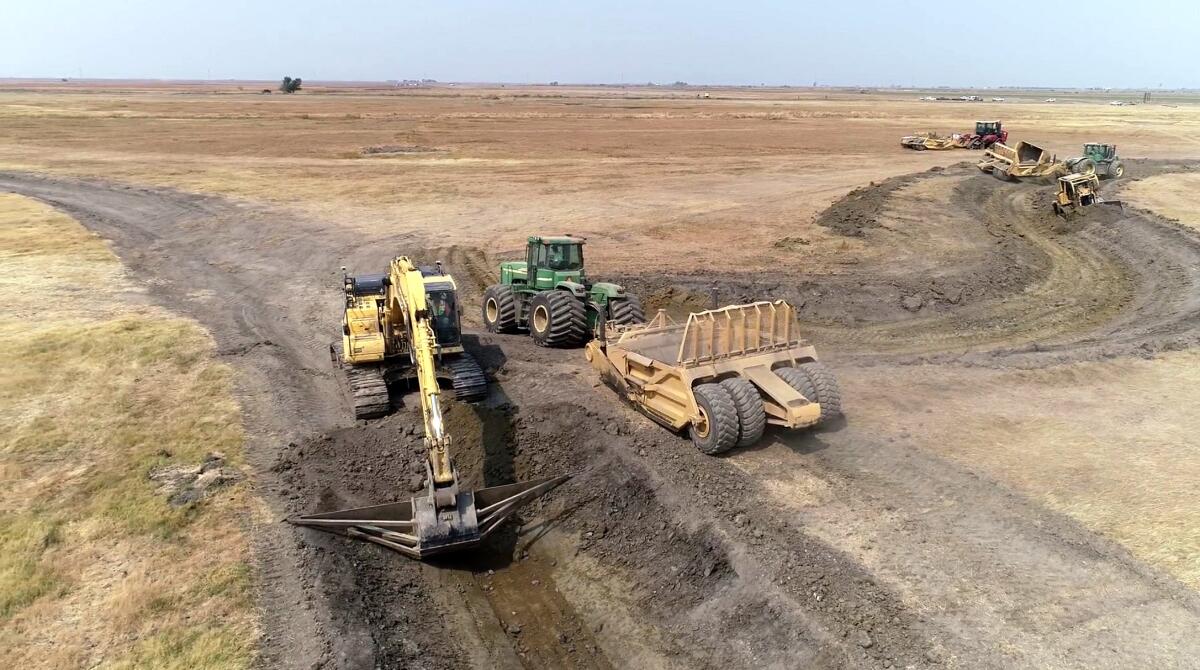
- Share via
Southwest of Sacramento, the branching arms of waterways reach into a patchwork of farm fields and pastures. Canals and wetlands fringed with reeds meet a sunbaked expanse of dry meadows.
These lands on the northwestern edge of the Sacramento-San Joaquin River Delta have now been targeted for restoration following the widespread destruction of estuary marsh habitats that began over a century ago.
But one habitat restoration project funded by a large agricultural water district is drawing criticism from environmental advocates. They say that while the project is based on claims of ecologically important marsh habitat, a large portion of the land is a high-and-dry former cattle pasture that does little to benefit endangered fish.
The dispute over the roughly 2,100-acre property centers on questions about which lands should be counted as tidal marsh habitat in the delta, one of California’s primary water sources. State and federal agencies that operate the two major water projects pumping from the delta have been supporting a series of habitat restoration projects as they work toward a requirement to restore at least 8,000 acres of tidal marshes to mitigate the ecological harm caused by water diversions.
As reservoirs decline on the Colorado River, California water agencies are under pressure to shoulder a substantial part of the inevitable cuts.
A large portion of that requirement could be satisfied by the property southwest of Sacramento — called the Lower Yolo Ranch Tidal Habitat Restoration Project — if federal wildlife officials agree with claims by state and federal water agencies that much of the property should receive credit as tidal marsh that benefits endangered delta smelt.
The Westlands Water District bought the property in 2007 and has done restoration work at the site by grading the land, removing concrete infrastructure and digging new tidal channels and swales. Thomas Birmingham, general manager of Westlands, has said the district bought the property because it was “an ideal location for restoration of tidal marsh habitat.”
The state Department of Water Resources has claimed that more than 1,700 acres, or about 80% of the property, benefits delta smelt. If the U.S. Fish and Wildlife Service confirms this and grants full credit for the acreage as tidal marsh habitat, Westlands is set to receive nearly $41 million from the state.
But environmental advocates argue that only about one-fourth of the property should receive credit as tidal marsh habitat, while the rest of the land is too high above sea level to get wet during high tides. They have pointed to documents indicating that much of the property lies 6.5 feet or more above sea level.
“They’re paying Westlands for fake habitat,” said Patricia Schifferle, director of Pacific Advocates, an environmental consulting firm. “Much of the area is upland habitat and will not support fish. … They’re selling cow pasture as if it was tidal habitat.”
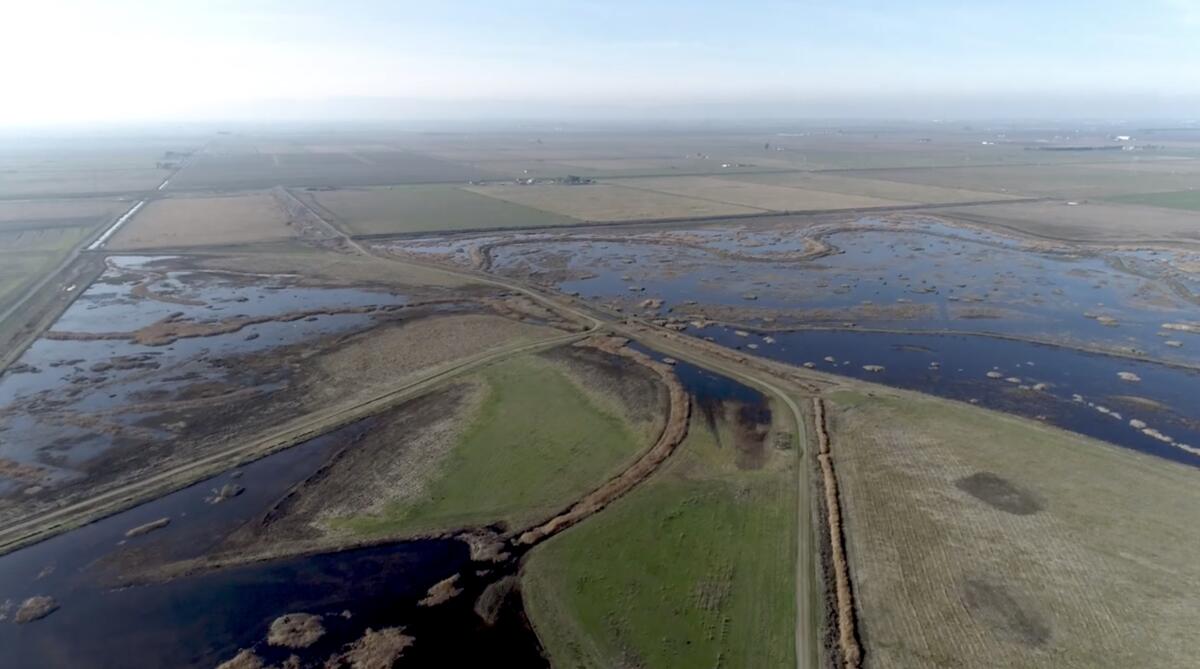
The property is in the southern portion of the Yolo Bypass, a floodplain on the north side of the delta.
The delta smelt, a finger-length fish, has been spiraling toward extinction despite decades of rescue efforts.
Schifferle pointed out that the Department of Water Resources’ request to the U.S. Fish and Wildlife Service, to certify credit for 1,713 acres of tidal marsh habitat, includes lands as much as 7.7 feet above sea level. Schifferle said that is too high to benefit fish.
“Delta smelt better grow legs, because there’s no way that’s tidal habitat for delta smelt,” Schifferle said. At $23,815 per acre, she said, “that’s a lot of money for cow pasture.”
A coalition of environmental groups raised concerns about the deal in a letter to state agencies in July. The groups, which included the Sierra Club and the Natural Resources Defense Council, said documents show “that there generally is no tidal influence on lands at elevations above 6.5 feet above sea level in this part of the delta, and therefore these lands are not ‘tidal’ marsh, ‘tidal wetland,’ or ‘intertidal’ habitat” and should not be credited toward meeting environmental mitigation requirements for the State Water Project.
The state will need to make good on a number of other promises to achieve its climate goals. Here’s how California is faring toward those goals.
The State Water Project pumps water from the delta and delivers it to farms and cities to the south. State officials have said the land purchase for the restoration project is funded by the State Water Project to satisfy habitat acreage requirements in the system’s federal permits.
The environmental groups urged the state Department of Water Resources and the Department of Fish and Wildlife to “refuse to certify mitigation credits of such uplands as tidal wetland habitat.”
Sabrina Washington, a spokesperson for the Department of Water Resources, said the restoration project is “aimed at generating a number of ecological benefits, including increased food production for delta smelt.” The department said the site also provides floodplain habitat for salmon and habitat for Swainson’s hawks and other species.
The department’s modeling shows that the restoration site “can be fully inundated and tidal as the Yolo Bypass fills and drains,” Washington said. “Even when not fully inundated, the site will generate benefits by producing food for delta smelt.”
Because of this, Washington said the Department of Water Resources has requested credit from the U.S. Fish and Wildlife Service for over 1,700 acres of restored fish habitat.
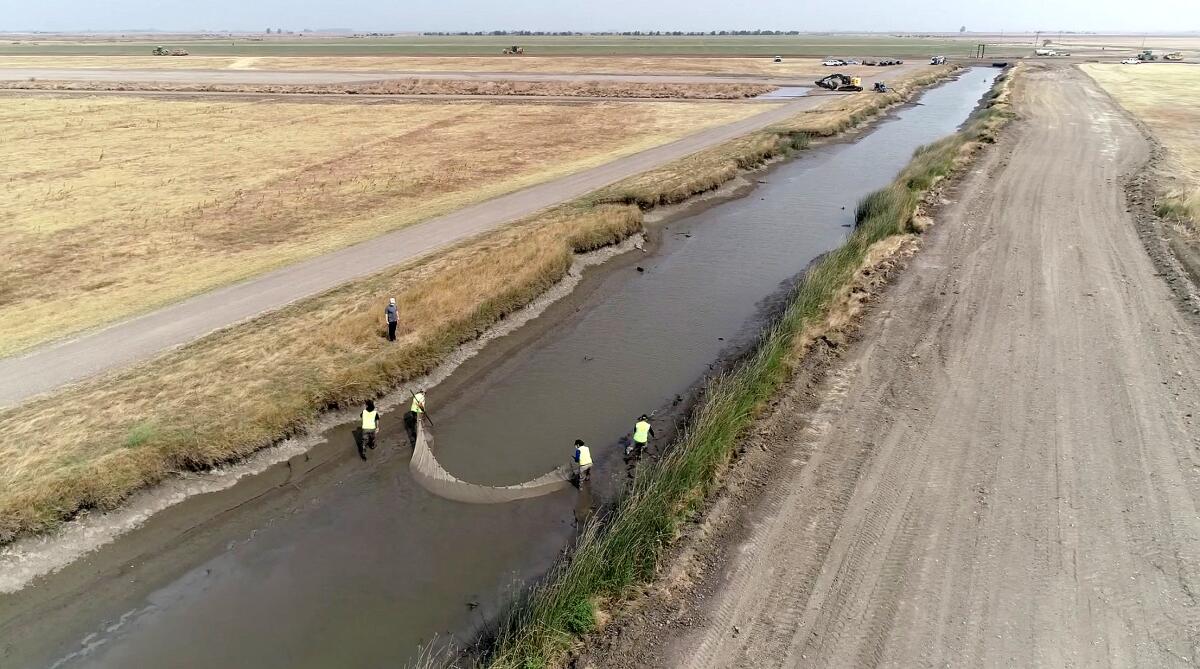
One recently released document, however, indicates the California Department of Fish and Wildlife has raised questions about giving credit for land more than 6.4 feet above sea level. The document was unsigned but created in 2020 by a senior environmental scientist at the department, Phillip Poirier.
“Please provide additional justification on why delta smelt credit should be approved for habitat above 6.4 feet … if that habitat is inaccessible to delta smelt most years,” the memo said. It also asked why the land above that elevation should be given the same credit “as habitat that directly benefits delta smelt year-round?”
This and other documents were obtained through requests by Schifferle, who shared them with The Times.
In email responses to questions from The Times, the Department of Fish and Wildlife said that, based on maps provided by the project’s proponents, “the current estimate of acreage above 6.4 feet elevation is approximately 1,588 acres,” and the project’s environmental review identified 6.4 feet elevation as average “higher high water” on the restoration site.
“Habitat valuation on the property is pending receipt of field verification data and supporting documentation from DWR,” the wildlife agency said, adding that the wildlife department’s habitat assessment “would be incomplete without this additional information.”
Dry wells and contaminated drinking water mostly affect low-income communities of color. Experts say drought and climate change are making it worse.
Westlands officials said the project has been identified as a key part of a state initiative called California EcoRestore, which began in 2015 with a goal of securing 30,000 acres of habitat restoration and enhancement in the delta, the Yolo Bypass and Suisun Marsh. The Lower Yolo Ranch site is one of multiple habitat restoration projects in the Yolo Bypass region.
“It’s a great project. I think the delta will be much better for this project and all the other restoration projects that are occurring in that area,” said Jose Gutierrez, Westlands’ chief operating officer. “And I think our state will be better off because of our contributions.”
Gutierrez said the property is located in “what we call this Goldilocks elevation where restoration projects really do well in this area.”
Westlands delivers water to vast farmlands in Fresno and Kings counties that produce almonds, pistachios, grapes, garlic, hay and other crops.
The district worked with the state Department of Water Resources and Department of Fish and Wildlife to prepare a plan detailing the restoration project. The water agency then submitted the plan to a state-federal fishery team tasked with determining the habitat acreage credits.
Westlands in 2020 completed construction work at the Lower Yolo Ranch site, which Gutierrez said was aimed at allowing water to “move more naturally through the property” with the tides. He said the project is “performing as designed” and yielding benefits for fish.
For centuries, Native Americans have visited Avi Kwa Ame, or Spirit Mountain, to seek religious visions and give thanks for the bounty of the Earth.
Westlands officials have said the wildlife department recently collected three delta smelt larvae on the property that were larger than smelt larvae collected elsewhere, and have also collected larvae of another fish, longfin smelt.
Gutierrez said the district isn’t selling land to the state. He said once the delta smelt habitat credits are confirmed, the district expects to receive about $40.8 million for the sale of those credits and plans to transfer ownership of more than 2,100 acres to the Department of Water Resources.
The district has spent more on the project than it expects to receive from the state, said Shelley Cartwright, Westlands’ deputy general manager of external affairs. She said Westlands has spent more than $43.5 million, including the cost of buying the property, planning, permitting and construction.
After the deal is complete, Westlands will still own nearly 1,300 acres of the Lower Yolo Ranch.
The disagreement over which portions of the property should be counted as tidal marsh habitat parallels other disputes over how California should protect fish populations and address the deterioration of the delta’s ecosystem. Researchers with the Pacific Institute said in a report this month that warmer water temperatures, reduced flows and increasing algae blooms linked to the drought have worsened long-term declines in the state’s fish populations and are pushing some species closer to extinction.
A new study pinpoints erosion hot spots along the entire California coast — and found that cliffs in Northern California are disappearing the fastest.
The delta was once filled with vast tidal marshes but was dramatically altered as wetlands were diked, drained and converted to farmland.
Doug Obegi, a senior attorney with the Natural Resources Defense Council, said state and federal agencies have obligations under a 2008 biological opinion to restore marsh and floodplain habitat for delta smelt and salmon, and are far behind schedule in meeting those obligations.
“I think we all recognize that the delta is in ecological crisis, and we need to take steps to restore the health of the delta. But the delta doesn’t benefit if people are spending money on projects that don’t actually provide those ecological benefits. And so it ends up being a waste of money,” Obegi said.
If this project and others like it are intended to benefit delta smelt, Obegi said, the land needs to be low-lying enough to be inundated by the tides.
“Engaging in giving credit for habitat restoration that doesn’t benefit the species really undermines the protection of the species,” Obegi said. And in this case, he said, “most of the acreage that they’re talking about is well above the high tide line and isn’t going to provide any of those benefits.”
Obegi said this issue is important because it goes to the heart of what California is doing for the delta ecosystem, and whether current approaches are effective.
“Are we really just trying to check the box?” he said. “Or are we actually trying to do things that will benefit the species?”
More to Read
Sign up for Essential California
The most important California stories and recommendations in your inbox every morning.
You may occasionally receive promotional content from the Los Angeles Times.
